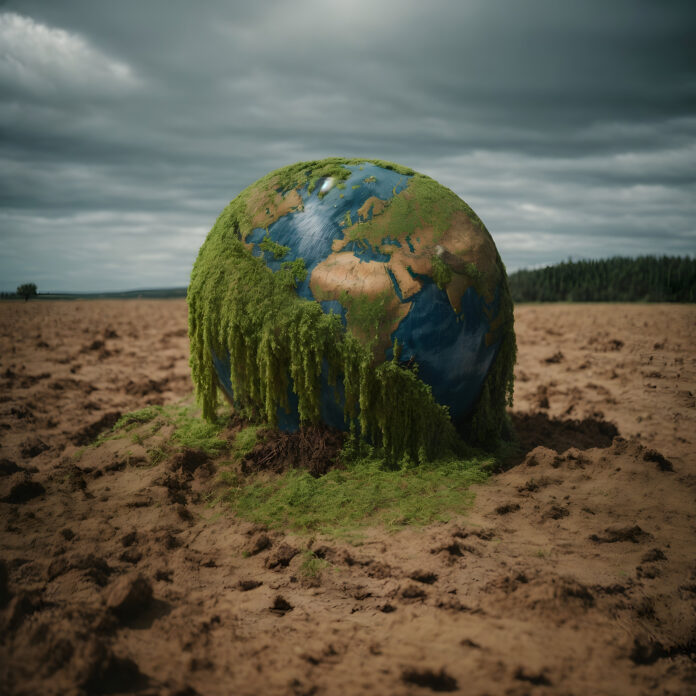Climate change is one of the most pressing global problems of our time. It influences ecosystems, weather phenomena, human health and the economy. The scientific community largely agrees that human activities, in particular the emission of greenhouse gases such as carbon dioxide (CO₂) and methane (CH₄), contribute significantly to current climate change. But there are also those who point out that climate fluctuations could have natural causes. This article looks at the various aspects of the fight against climate change, including the main causes, strategies to combat it and the discussion of natural climate cycles.
Main causes of climate change
Greenhouse gases and their sources
The majority of scientific research suggests that the increase in the concentration of greenhouse gases in the atmosphere is the main cause of current global warming. These gases, including CO₂, CH₄, nitrous oxide (N₂O) and fluorinated gases, trap heat in the Earth’s atmosphere and lead to a greenhouse effect. The burning of fossil fuels for energy and transportation, deforestation and industrial agriculture are the main sources of these emissions.
Example: Burning coal to generate energy releases large quantities of CO₂. According to the International Energy Agency (IEA), around 30 % of global CO₂ emissions come from electricity and heat generation.
Land use change and deforestation
Deforestation and other changes in land use also contribute significantly to climate change. Forests act as carbon sinks that absorb and store CO₂ from the atmosphere. When trees are cut down, this stored carbon is released and the earth’s ability to absorb CO₂ is reduced.
Example: The Amazon rainforest, often referred to as the “lungs of the earth”, has suffered considerable losses due to deforestation in recent decades. The Food and Agriculture Organization (FAO) estimates that around 10 million hectares of forest are lost worldwide every year.
Read also: Socio-historical causes of climate change
Strategies to combat climate change
Renewable energies and energy efficiency
The transition to renewable energy sources such as solar, wind and hydropower is one of the most effective measures for reducing greenhouse gas emissions. These technologies produce energy without burning fossil fuels and therefore without CO₂ emissions.
Example: Germany is a leading country in the field of renewable energies and has set itself the goal of becoming largely CO₂-neutral by 2050. In 2020, over 45% of the electricity generated in Germany came from renewable sources .
Energy efficiency and technological progress
In addition to switching to renewable energies, improving energy efficiency also plays a decisive role. This includes measures such as the insulation of buildings, the use of energy-efficient appliances and the optimization of industrial processes.
Example: LED lighting is much more energy-efficient than conventional light bulbs and can reduce energy consumption for lighting by up to 75 %.
Read also: Everyday tips for improving climate quality
Controversies and natural climate cycles
Natural climate variability
There is a scientific debate about the extent to which natural climate cycles contribute to current climate change. Climate cycles such as the Milanković cycles, solar variability and volcanic eruptions have led to significant climate changes in the past.
Example: The Little Ice Age, a period from about 1300 to 1850, was a phase of global cooling that is partly attributed to reduced solar activity and increased volcanic activity.
The role of scientific uncertainty
While the influence of greenhouse gases on the climate is well documented, there is some uncertainty about the exact mechanisms and extent of natural climate variability. Some skeptics argue that these uncertainties are greater than generally assumed and that climate models may therefore underestimate the role of natural factors.
Example: A frequently cited argument is that climate models do not fully take into account all possible natural influences, which could lead to uncertainties in the forecasts.
The fight against climate change requires a comprehensive understanding of the causes and a combination of strategies to reduce emissions and adapt to unavoidable climate change. While the emission of greenhouse gases by human activities is considered the main cause, it is important to also consider the possible natural influences. Only through a comprehensive and integrative approach can we effectively tackle the challenges of climate change and secure a sustainable future.
Sources
1ST IEA: [International Energy Agency](https://www.iea.org)
2. FAO: [Food and Agriculture Organization of the United Nations](http://www.fao.org)
3. Federal Ministry for Economic Affairs and Energy: [Erneuerbare Energien in Deutschland](https://www.bmwi.de)
4. U.S. Department of Energy: [Energy Efficiency](https://www.energy.gov)
5. NASA: [Milankovitch Cycles and Climate](https://www.nasa.gov)
6. IPCC: [Intergovernmental Panel on Climate Change](https://www.ipcc.ch)
—
This article provides a comprehensive overview of the various aspects of the fight against climate change, from the main causes to the possible natural influences and the strategies to combat them.



